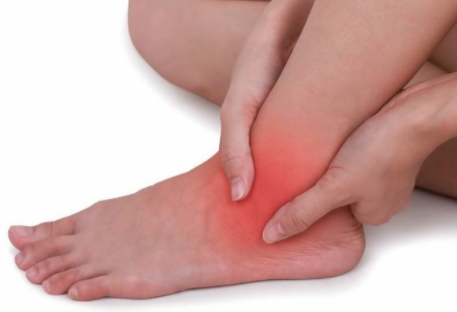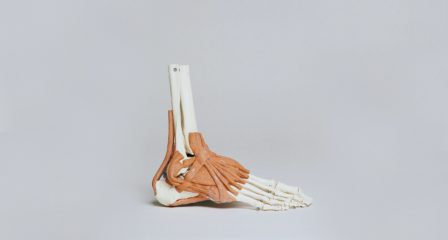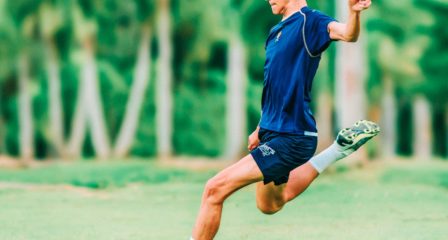With the return to contact sport after the year of COVID have you found yourself with a new ankle sprain and not sure how to manage? Or are you dealing with an old sprain that just doesn’t seem to be getting better since returning to sport?
A New Ankle Injury
Most commonly ankle sprains will occur as our ankle rolls inwardly, stretching ligaments/joint capsule/muscles and tendons that run along the outside of our foot and ankle. Pain may be felt instantly and you may not be able to walk on your foot. You may find the ankle swells and becomes bruised over the initial 24 hours, this process a normal inflammatory process when our bodies detect injury.
Below is an image outlining the myriad of structures within the ankle. As can be seen, a lot of tissues support the ankle, injuries through certain movements can disrupt their stabilisation.
[ux_image id=”2554″] [gap]
Management of a new ankle sprain can vary based on the severity of the injury, mechanism, chosen sport etc. Further imaging such as a x-ray or an MRI may be warranted to rule out a fracture or other bony involvement. Most of the time, clinical assessment can safely direct management plans, which are based on staged progressions back to your chosen sport or activity. In the early stages, progressions are dictated by tissue healing time frames and resolution of acute inflammation such as bruising, swelling, pain with weightbearing etc. It is important to perform the early stages of an ankle sprain recovery well, as doing this will ensure later stages are well tolerated and best outcomes are achieved.
Within the first 72 hours a guiding acronym is a follows:
P – protection (can be in the form of crutches or if needed a moon-boot for short duration)
E – elevation
A – avoid anti-inflammatories
C – compression
E – education (in the form of physiotherapy advice)
Following this, load through the ankle should be encouraged as tolerated, this can be done with assistance of crutches or without.
In sports, such as netball/basketball/soccer, return to play can involve numerous progressions before a confident return to contact can happen. The ability to walk and run cannot be the only two factors looked at; our ability to single leg load, twist and change direction, speed up and slow down quickly and getting through full training sessions, can be some of the criteria looked at before a return to play.
An Old Ankle Injury
Or maybe you’ve returned back to sport from an ankle sprain with still lingering pain in and around the ankle joint?
After an ankle injury if certain aspects of recovery aren’t addressed; for example, range of motion, strength, proprioception, the ankle has changed its biomechanics which alters the load that goes through it. These factors are known as intrinsic factors; things within our ankle joint. Extrinsic factors, or things outside the ankle, can include; return to sport too quickly, footwear, training load, bodyweight. The combination of these intrinsic and extrinsic factors can lead to a range of sequelae causing pain through the ankle despite the injured tissue being recovered.
These intrinsic factors above can affect other tissues (eg. muscles, tendons, joint capsule, bone) to do extra work to help stabilise, absorb force and move your ankle. Flow on effects can result in tissue sources becoming inflamed secondary to the amount of work they’re doing which can cause problems with impingement, tendinopathy, synovitis to name a few.
Extrinsics factors like progression through return to activity and the amount of activity can be big factors for persistent ankle pain post injury. The ability for our muscles, tendons, ligaments and capsule to adapt after a period of rest needs to be respected. As discussed above, if you are putting an adverse load through your ankle that isn’t operating as it used to, conditions such as synovitis, impingement, tendinopathy, boney surface changes may be reasons for your pain.
Things that can help address your pain initially include; activity/training modification, footwear changes, non-steroidal anti-inflammatories, but it’s important to understand and correct ankle and foot movements that may be contributing. As mentioned, ensuring adequate range of motion, strength, power and proprioception can improve your pain and help prevent recurrence of an ankle sprain.
Sometimes looking purely at the foot and ankle isn’t enough to appreciate the load going through the ankle during walking and running. As we are all connected, looking further up at the knees, hips and torso can help understand why your ankle is being loaded differently and irritating the capsule. This can be done in a myriad of ways, here at The Injury Clinic we offer treadmill analysis alongside clinical observation in consults to identify key contributing areas to design a plan needed for you. Looking at extrinsic factors as well plays a big role in understanding load management to ensure longevity for your chosen activity and lifestyle.
For help addressing a new ankle injury or persistant pain from a previous injury, please allow our physiotherapy team to guide your rehabilitation.



